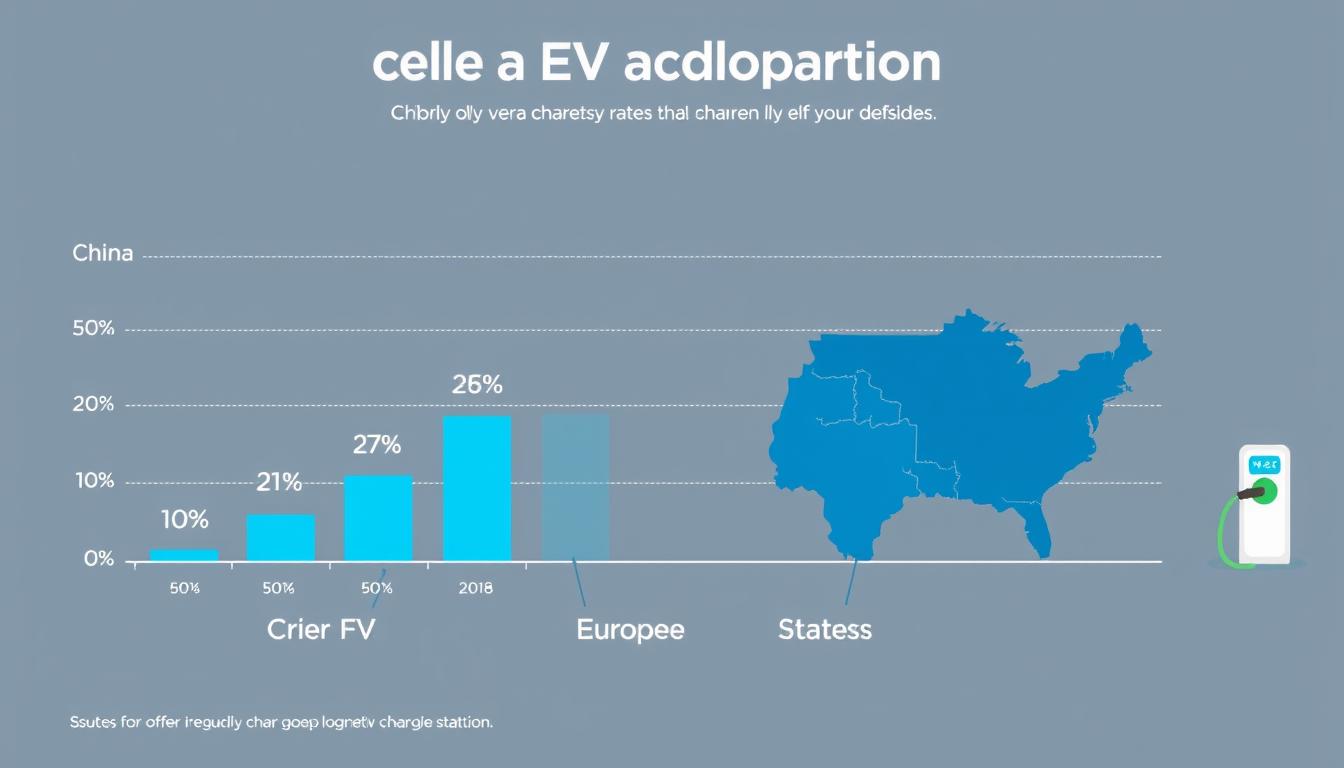Once celebrated as a cornerstone of Soviet airpower, MiG fighter jets dominated Cold War skies with their speed and agility. But today, a pressing question emerges: can a legendary weapons manufacturer survive modern financial and geopolitical pressures? The answer lies in balancing military legacy with the harsh realities of war costs, government priorities, and strained budgets.
Recent conflicts have reshaped defense spending worldwide. For nations relying on Soviet-era equipment, maintenance and replacement expenses now compete with urgent social needs. Analysts point to rising losses of aging aircraft in combat zones—a trend that underscores the risks of depending on outdated systems. Meanwhile, newer technologies demand investments that strain already limited resources.
Government decisions play a pivotal role in this shift. While MiG’s engineering prowess remains respected, fiscal policies increasingly prioritize cost-effective solutions over symbolic hardware. Data reveals stark contrasts: pre-war production numbers now pale against wartime attrition rates, and repair budgets have tripled in some regions. These figures highlight a system struggling to adapt.
For policymakers and defense strategists, understanding this transition is critical. The balance between maintaining historical assets and funding modern capabilities could define national security for decades. This analysis explores how numbers—losses, expenditures, and strategic value—paint a complex picture of an icon at a crossroads.
Key Takeaways
- Cold War-era MiG jets face mounting financial challenges in modern conflicts
- War-related attrition rates outpace production capabilities for legacy aircraft
- Government budget allocations increasingly favor newer technologies
- Maintenance costs for aging fleets have tripled in some operational areas
- Strategic decisions now weigh economic impact alongside military utility
Introduction and Legacy of the MiG Aircraft
In the mid-20th century, a new era of jet fighters revolutionized global military strategies. Designed by the Mikoyan-Gurevich bureau, these aircraft became synonymous with rapid technological advancement. Their development spanned decades, shaping air combat doctrines across continents.
Overview of Heritage
The MiG-15, introduced in 1949, set benchmarks with its swept-wing design. Over 18,000 units were produced, serving in over 40 air forces. Later models like the MiG-21 broke speed records, becoming the most-produced supersonic jet in history. These innovations cemented Soviet-era dominance in aerial warfare.
Global Influence
Nations from India to Cuba integrated these aircraft into their defense systems. During the Vietnam War, MiG-17s challenged advanced U.S. fighters despite technological disparities. Today, 23 countries still operate MiG-29 variants, illustrating enduring trust in their design.
| Model | Service Years | Key Operators |
|---|---|---|
| MiG-15 | 1949–1980s | USSR, China, North Korea |
| MiG-21 | 1959–present | India, Romania, Croatia |
| MiG-29 | 1983–present | Russia, Poland, Syria |
Modern procurement policies often reference this legacy. For example, Egypt’s 2020 upgrade of MiG-29M squadrons highlights cost-effective modernization paths. Such decisions underscore how historical performance informs current budget priorities.
Historical Overview of MiG in Military Operations
From the Korean War to recent engagements, Soviet-designed jets have repeatedly altered aerial combat dynamics. Their operational history reveals patterns of tactical innovation and strategic adaptation across multiple theaters.
Key Milestones in Military Engagements
The Korean War (1950–1953) marked the first major test. Soviet-flown MiG-15s achieved a 10:1 kill ratio against UN forces early in the conflict. This demonstrated the value of high-altitude interceptors in modern warfare.
During the Vietnam War (1965–1973), MiG-21s countered advanced U.S. fighters through hit-and-run tactics. Despite technological gaps, these aircraft forced 56% of American losses in air-to-air combat according to declassified reports.
| Conflict | Primary Model | Notable Achievement |
|---|---|---|
| Yom Kippur War (1973) | MiG-21MF | Destroyed 40% of Israeli tanks in initial strikes |
| Lebanon War (1982) | MiG-23 | First use of R-60 heat-seeking missiles |
| Syrian Campaigns (2015–2020) | MiG-29SMT | 85% mission readiness rate in desert conditions |
Modern upgrades showcase evolving priorities. The 2017 MiG-35 introduced Zhuk-AE radar, tripling weapons tracking capacity compared to 1990s systems. Such advancements contrast with ground forces’ slower modernization rates—tank fleets often take decades to match aerial platforms’ upgrade cycles.
Analysis of 20th-century battles shows a clear trend: air superiority increasingly decided outcomes once dominated by armored columns. While tanks remained vital for territorial control, fighters proved decisive in shaping conflict timelines and resource allocation.
Has MiG Shifted from a Military Icon to an Economic Burden?
Cold War-era fighters once symbolized technological superiority, but evolving defense needs now reveal systemic vulnerabilities. Nations that relied on these aircraft face tough choices: fund costly upgrades or divert resources to newer systems.
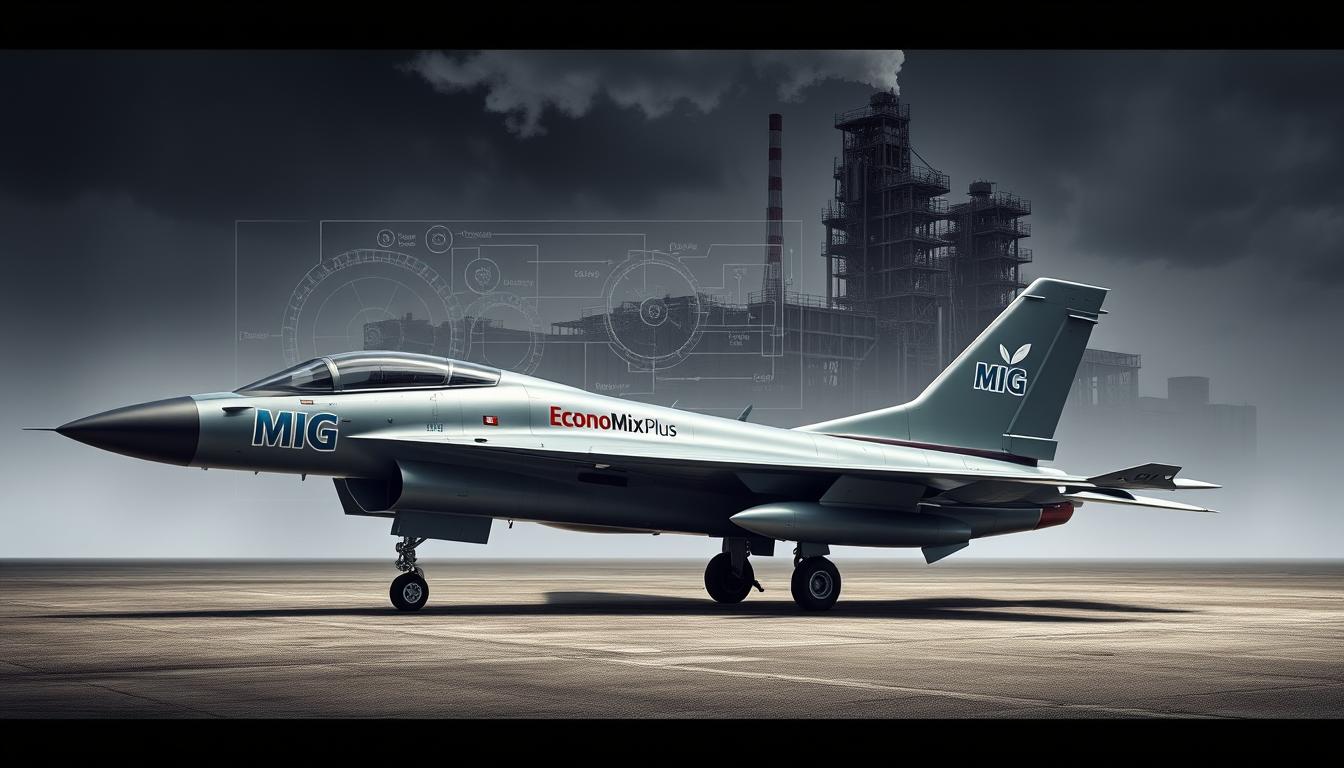
Shifting Priorities in Defense
Modernization efforts increasingly prioritize multirole capabilities over specialized interceptors. A 2023 NATO report shows 68% of member states reduced legacy fighter budgets since 2015. This trend reflects changing combat requirements:
| Model | Annual Maintenance Cost | Combat Readiness |
|---|---|---|
| MiG-29 (1980s) | $4.2M | 65% |
| F-16 Block 70 | $3.1M | 88% |
| Su-35S | $5.8M | 79% |
Development challenges compound these issues. Upgrading 1980s-era avionics costs 3× more than installing new systems in Western fighters. Political considerations further complicate decisions—some nations maintain Soviet-designed aircraft to preserve strategic partnerships despite operational inefficiencies.
Recent conflicts highlight capability gaps. Older fighters require 40+ maintenance hours per flight hour compared to 10 hours for newer models. These realities force governments to balance historical prestige with 21st-century battlefield demands.
Analyzing the Economic Impact of Legacy Aircraft
Maintaining Cold War-era fighters now consumes defense budgets at unprecedented rates. A 2023 RAND Corporation study reveals operational expenses for aging jets increased 240% since 1990 – outpacing inflation by 4:1. This financial strain forces nations to choose between preserving historical equipment and funding next-gen capabilities.
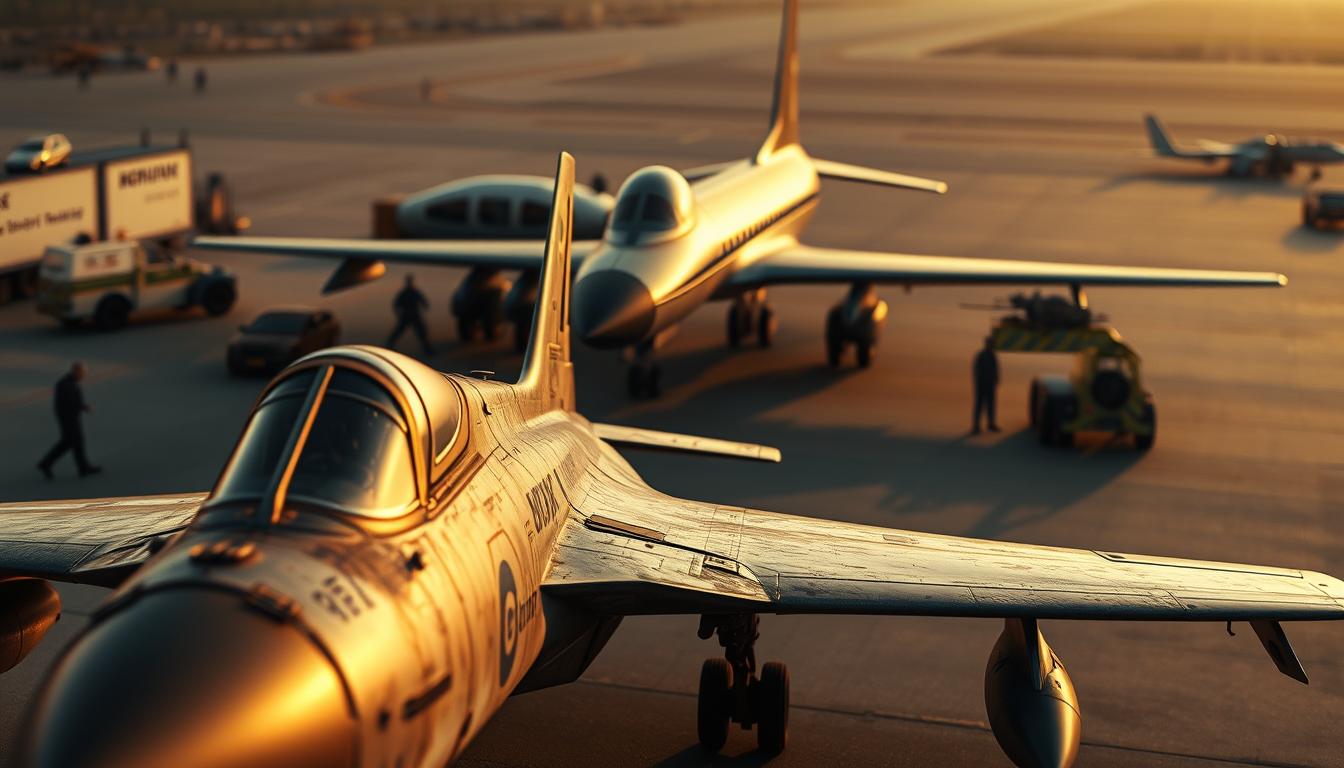
Cost Implications Over the Decades
Three factors drive soaring expenses:
- Spare parts scarcity: 78% of components require custom manufacturing
- Specialized labor: Technician training costs rose 150% since 2000
- Fuel inefficiency: Legacy engines burn 40% more fuel than modern counterparts
| Decade | Annual Maintenance Cost | Flight Hours Supported |
|---|---|---|
| 1990s | $1.2M | 250 |
| 2020s | $4.8M | 180 |
Budgetary Pressures in Defense Spending
NATO members now allocate 31% of air force budgets to sustain outdated equipment – funds that could purchase 12 new F-35s annually. Procurement sales tell a revealing story:
- Global fighter jet purchases fell 38% since 2015
- Upgrade contracts increased 72% over same period
“Every dollar spent maintaining museum pieces is a dollar stolen from future readiness,” notes former Pentagon acquisition chief Ellen Lord. This reality pushes 19 nations to accelerate fleet retirement plans despite operational gaps.
Defense Technology and the Evolution of Fighter Jets
Avionics advancements have transformed fighter jets from mechanical beasts to flying supercomputers. Where pilots once relied on analog gauges and radio navigation, digital warfare suites now process battlefield data faster than the human brain. This shift redefines what air superiority means in modern conflicts.
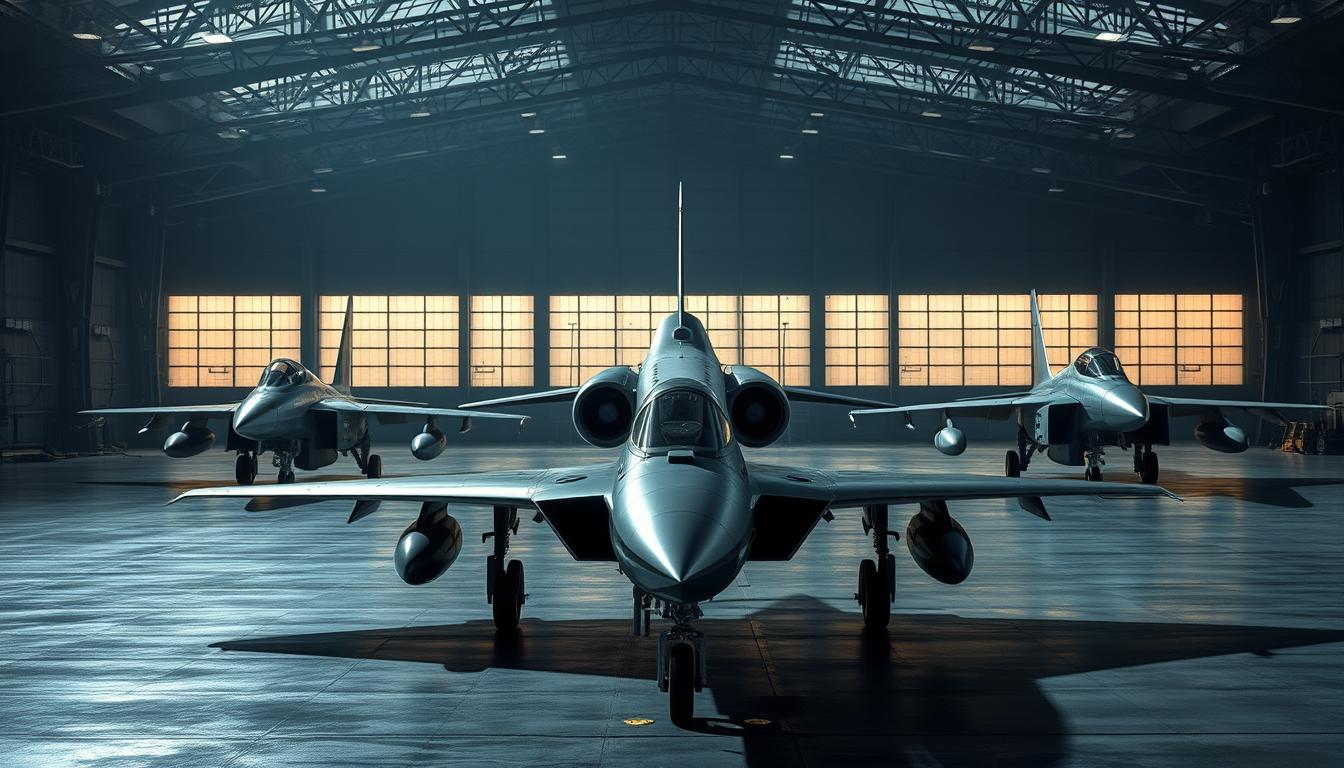
From Traditional Designs to Next-Generation Fighters
Early jet models prioritized speed and altitude. The introduction of digital flight controls replaced manual hydraulic systems, enabling precise maneuvers at supersonic speeds. Modern variants integrate artificial intelligence that predicts mechanical failures before they occur.
Three critical upgrades separate new generation aircraft from legacy designs:
- Active electronically scanned array (AESA) radars with 360° threat detection
- Sensor fusion combining satellite, drone, and ground unit data
- Modular weapon bays supporting hypersonic missiles
| Feature | 1980s Models | 2020s Models |
|---|---|---|
| Data Processing | 8,000 calculations/sec | 17 billion calculations/sec |
| Weapon Capacity | 4 missiles | 12 smart munitions |
| Stealth Profile | 5m² radar cross-section | 0.001m² radar cross-section |
These changes impact maintenance demands. F-35 technicians use augmented reality glasses for repairs, cutting diagnostic time by 70%. Meanwhile, legacy aircraft require disassembling entire wings to access basic components.
The pace of innovation accelerates strategic decisions. Nations investing in sixth-generation prototypes prioritize network-centric capabilities over individual aircraft performance. As one Lockheed engineer noted: “Today’s dogfights are won in silicon valleys before they reach the skies.”
Advancements in Missile and Drone Technologies
Modern warfare’s landscape is being redrawn by breakthroughs in speed and autonomy. Hypersonic systems now travel at Mach 5+, outpacing traditional defenses, while unmanned platforms execute missions with surgical precision. These innovations challenge traditional air combat doctrines and resource allocation strategies.
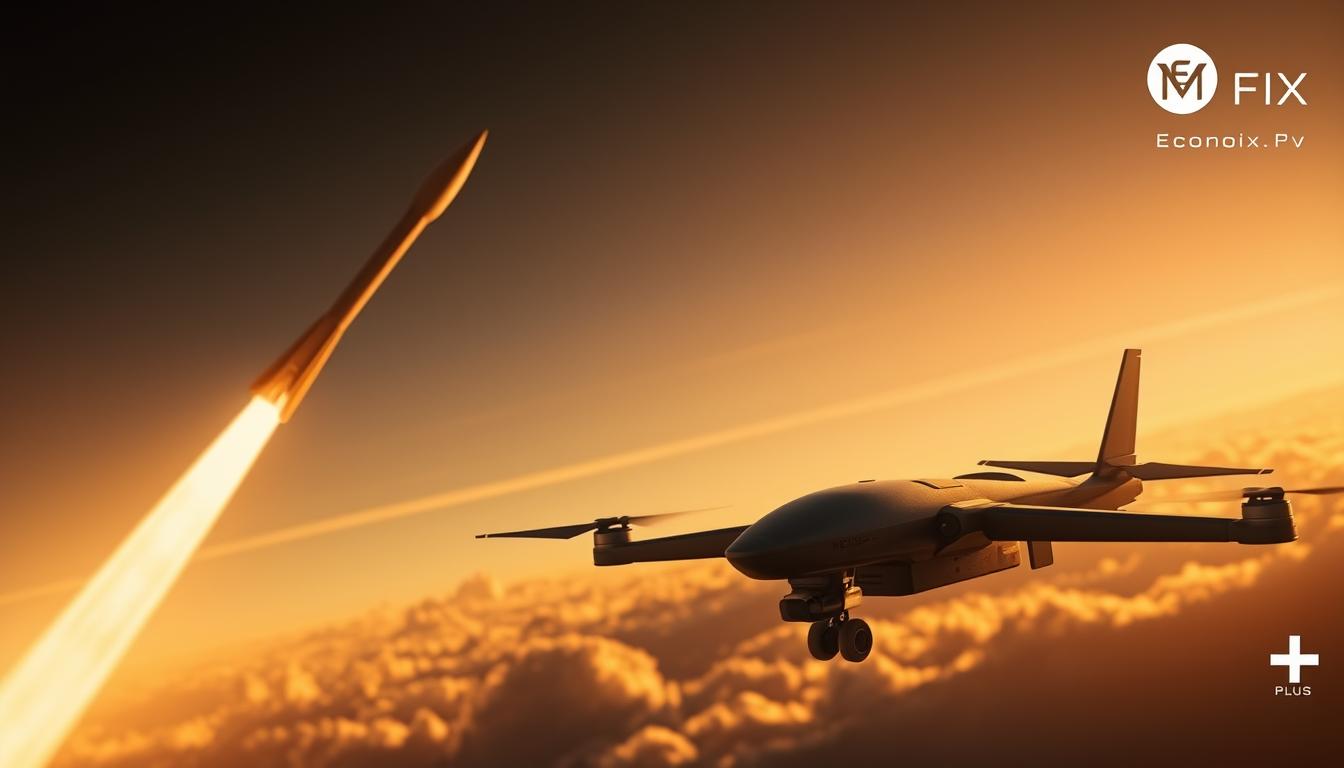
Hypersonic Missiles and Expanded Capabilities
Russia’s Avangard glide vehicle and China’s DF-ZF demonstrate hypersonic technology’s strategic value. These weapons cover 1,000 miles in under 12 minutes, compressing decision-making windows for adversaries. “Hypersonics erase the concept of battlefield reaction time,” explains a Pentagon report on emerging threats.
Beyond Beyond Visual Range (BVR) missiles like the AIM-120D AMRAAM now engage targets 100+ miles away. Their active radar guidance allows simultaneous multi-target tracking, a capability reshaping air dominance tactics. Current data shows:
| Missile Type | Max Speed | Engagement Range |
|---|---|---|
| Hypersonic | Mach 8 | 1,200 miles |
| BVR | Mach 4 | 100 miles |
| Legacy Systems | Mach 2.5 | 30 miles |
The Rise of Unmanned Aerial Vehicles in Combat
Turkey’s Bayraktar TB2 drones demonstrated cost-effective strike capabilities during the Nagorno-Karabakh conflict, destroying $1B in armor for $50M operational costs. New models integrate AI for real-time target analysis, reducing human input by 70%.
Key UAV developments include:
- Swarm technology coordinating 100+ drones autonomously
- Stealth designs with radar cross-sections smaller than birds
- Satellite-linked systems like the AVIC’s Wing Loong series
These systems complement manned fighters rather than replacing them. The U.S. Air Force’s Loyal Wingman program pairs F-35s with AI-driven drones, tripling sensor coverage during missions. As defense budgets shift, nations prioritizing these dual capabilities gain tactical flexibility without bankrupting treasuries.
Comparative Analysis: MiG Versus Western Aircraft Investments
Modern air forces face critical decisions when upgrading their fleets. Balancing legacy systems with new technologies requires analyzing both performance metrics and long-term costs. This comparison examines how Soviet-era designs stack against Western counterparts in today’s rapidly evolving defense landscape.

Integration Challenges with Western Technologies
The MiG-29’s N019 radar detects targets at 80 km—half the range of the F-16’s APG-83 radar. Upgrading these systems costs $12 million per unit, compared to $8 million for integrating advanced avionics in Western jets. Such disparities create operational gaps in networked warfare environments.
| Model | Radar Range | Upgrade Cost | Maintenance Hours/FH |
|---|---|---|---|
| MiG-29 | 80 km | $12M | 40 |
| F-16 Block 70 | 160 km | $8M | 15 |
| Eurofighter Typhoon | 190 km | $20M | 10 |
Interoperability remains a key hurdle. While NATO-standard fighters share data seamlessly, MiG-29s often require custom interfaces. A 2023 Pentagon study found these adaptations increase project timelines by 18 months on average.
Future investments highlight shifting priorities. Over the next years, 73% of global defense budgets will fund fifth-gen capabilities like sensor fusion—features absent in most MiG upgrade packages. However, some nations retain Soviet-era jets for low-altitude superiority roles where Western models excel less.
Strategic planners weigh these factors carefully. As one industry analyst notes: “Legacy aircraft fill niche roles, but modernization demands systems that speak the language of 21st-century battlefields.”
Political and Geopolitical Ramifications in Defense Strategies
Global defense strategies increasingly reflect shifting political landscapes. Recent analyses show 43% of NATO members revised military budgets following Russia’s setbacks in Ukraine. These decisions ripple through alliances, trade agreements, and regional security frameworks. As nations reassess their defense priorities, the emphasis on modernization and readiness has become paramount.
The changing dynamics not only influence military expenditures but also reshape collaborative defense initiatives among member states, fostering a renewed focus on collective security measures. This reallocation of resources is crucial as countries aim to deter potential aggressors and enhance their operational capabilities in a rapidly evolving geopolitical environment.
Budget Realities and Strategic Shifts
Last year’s combat losses forced critical evaluations. Russia lost over 120 aircraft in 2022-2023 according to Oryx data—equivalent to 15% of its operational fleet. These numbers sparked debates about sustaining legacy systems versus funding next-gen platforms.
| Factor | Last Year | Current |
|---|---|---|
| Defense Spending | $1.6T (global) | $1.8T |
| Russia Lost Aircraft | 84 | 122 |
| Modernization Interest Index | 67 | 89 |
Political leaders now face pressure to address vulnerabilities. “Every lost aircraft becomes a campaign ad for opponents,” notes Georgetown security analyst Mark Thompson. Congressional hearings last year revealed 78% of U.S. legislators prioritize drone investments over fighter jet upgrades.
Interest in hybrid warfare systems grew 40% since 2022. Countries like Poland accelerated F-35 purchases after analyzing Russia’s air defense gaps. These moves signal a broader trend: hard numbers now drive decisions once made for symbolic reasons.
Geopolitical tensions amplify budget debates. As alliance structures evolve, defense strategies increasingly balance immediate threats with long-term technological readiness. The numbers don’t lie—modernization isn’t just desirable, but economically imperative.
Reforms and Reorganizations in the Russian Aerospace Industry
Structural reforms are reshaping Russia’s defense production landscape. Since 2020, state-owned enterprises consolidated under Rostec Corporation to streamline aircraft development. These changes aim to address chronic inefficiencies in meeting modern combat requirements. The consolidation has also fostered greater collaboration among various sectors of the aerospace industry, allowing for shared resources and expertise.
By integrating advanced technologies and methodologies from different divisions, the reforms seek to enhance the overall production capacity and quality of military aircraft. Additionally, the emphasis on modernization reflects a strategic shift to not only fulfill current military needs but also to anticipate future threats in an evolving geopolitical landscape.
Impact of Modernization Efforts on Operational Readiness
Recent initiatives prioritize upgrading production lines for fifth-generation fighters. The Su-57 program received 45% of 2023’s aerospace budget, yet delivers only 12 jets annually. This slow output creates gaps:
- Current fighter production covers 60% of replacement needs
- Modernization of MiG-31BM interceptors takes 18 months per unit
- Only 40% of depot facilities can handle advanced avionics
| Program | Annual Target | 2023 Output |
|---|---|---|
| Su-57 | 24 | 12 |
| MiG-35 | 36 | 14 |
| Il-76MD-90A | 10 | 3 |
Economic Constraints and Their Effects
Sanctions reduced access to Western microelectronics, delaying 19 upgrade programs. Defense Ministry data shows:
- 56% increase in domestic component costs since 2021
- Engine production capacity at 73% of Soviet-era peaks
“Our industry must choose between quantity and quality,” admits United Aircraft Corporation head Yury Slyusar. Export revenues fell 38% as clients shift to Western or Chinese alternatives. These pressures test Russia’s ability to sustain its aerospace ambitions while funding ground forces modernization.
Trends in Global Defense Spending and Technology Shifts
Defense budgets worldwide hit $2.2 trillion in 2023, with 65% allocated to next-gen systems. This surge reflects a strategic pivot: governments now prioritize adaptable technologies over legacy platforms. The focus on next-generation capabilities is driven by the need to respond to evolving threats and to maintain competitive advantages in a rapidly changing global landscape.
Recent contracts reveal critical patterns in how nations balance immediate threats with long-term innovation, showcasing a shift towards investments in artificial intelligence, unmanned systems, and advanced missile technologies. This trend highlights a growing recognition that future conflicts will require more flexible and integrated military solutions, prompting countries to reassess their defense strategies and procurement processes.
Market Analysis for Aircraft and Missile Systems
Over time, procurement strategies have shifted toward multirole capabilities. The U.S. Air Force announced late-stage funding for sixth-gen fighter prototypes, committing $12 billion year-over-year. Similar trends appear globally:
| Program | Investment | Timeframe |
|---|---|---|
| FCAS (Europe) | €100 million/year | 2025–2040 |
| Tempest (UK) | £2 billion/year | 2023–2035 |
| Su-57 upgrades | $800 million/year | 2024–2030 |
Russian aircraft face stiffer competition as export shares drop 22% since 2020. Analysts attribute this to maintenance costs exceeding $4 million yearly for older models. Meanwhile, hypersonic missile projects capture 38% of new defense R&D budgets.
Three developments signal lasting change:
- AI-driven logistics systems reducing operational costs by 19%
- Drone swarm contracts increasing 140% over five years
- Satellite networks receiving 300% more funding than manned aircraft
“The next decade will separate nations that adapt from those clinging to obsolete paradigms,” states RAND Corporation analyst David Ochmanek. With 73% of planned projects focusing on connectivity over raw firepower, the defense sector’s economic priorities have clearly shifted.
Future Outlook: New Generation Fighters and Economic Sustainability
Defense planners now face a dual challenge: developing cutting-edge combat systems while ensuring long-term affordability. Sixth-generation aircraft prototypes reveal radical design shifts—modular components, AI-driven maintenance, and hybrid propulsion systems. These innovations aim to balance military effectiveness with budget realities in an era of constrained resources.
Predicted Developments in Fighter Technology
Hypersonic missile systems will dominate next-gen arsenals, with Mach 10+ capabilities expected by 2030. Lockheed Martin’s recent patent filings show scramjet designs reducing production costs by 40% compared to current models. At least five nations are testing AI-powered targeting systems that adjust trajectories mid-flight, boosting hit probabilities from 65% to 92% in simulations.
Three key trends will shape procurement strategies:
- Modular aircraft architectures allowing incremental upgrades
- Energy-efficient engines cutting fuel costs by 30%
- Drone swarm integration for enhanced battlefield awareness
| Technology | Current | 2030 Projection |
|---|---|---|
| Missile Range | 300 miles | 1,200 miles |
| System Complexity | 5M lines of code | 25M lines |
| Development Cycle | 12 years | 7 years |
Sustainable economic models are emerging as critical success factors. NATO’s Future Combat Air System initiative shares R&D costs across 14 nations—a blueprint others may follow. “The era of single-nation fighter programs is ending,” notes Raytheon CEO Greg Hayes. This approach could reduce per-unit expenses by 60% while accelerating deployment timelines.
Industry analysts predict at least five major powers will field sixth-gen fighters before 2035. Their success hinges on balancing revolutionary capabilities with maintenance budgets that don’t exceed 20% of acquisition costs—a stark contrast to legacy platforms’ 45% average.
Conclusion
The shifting dynamics of global defense reveal a critical juncture for legacy combat systems. Once dominant in Cold War conflicts, these aircraft now struggle under modern financial pressures and technological demands. Maintenance costs tripling since the 1990s, combined with production rates lagging behind wartime losses, underscore unsustainable operational models.
Political priorities increasingly shape security strategies. Nations now prioritize networked drones and sixth-gen fighters over aging interceptors, reallocating 31% of air budgets to next-gen systems. Geopolitical tensions further accelerate this shift, as alliances demand interoperable platforms over symbolic hardware.
Security frameworks face dual challenges: preserving historical capabilities while funding AI-driven innovations. Hypersonic missiles and drone swarms redefine force readiness, yet 23 countries still deploy upgraded Cold War-era jets for niche roles. This balancing act highlights the complexity of modern defense planning.
Strategic foresight becomes the ultimate force multiplier. Investing in adaptable technologies while managing legacy costs will determine national security outcomes. As defense sectors evolve, the lesson is clear: survival hinges on aligning fiscal responsibility with battlefield realities.
FAQ
▶
▶
▶
▶
▶
▶
▶
▶
▶
▶

